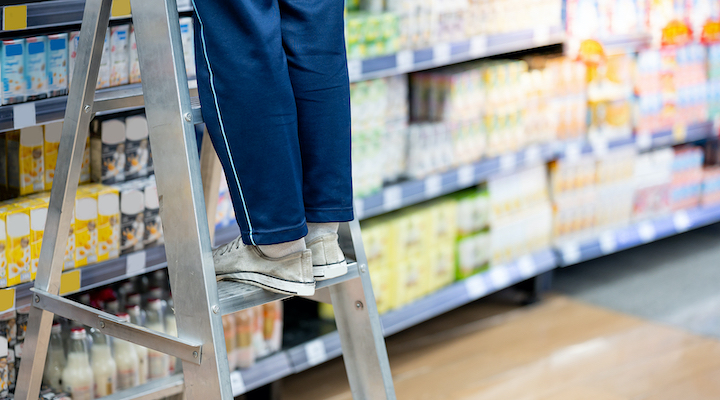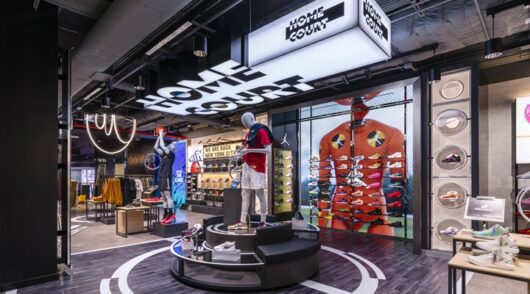It has been seven years since Amazon acquired the American grocery chain Whole Foods Market, but from its perspective, it is still only scratching the surface of the grocery sector. However, at last week’s Delivering the Future event in Nashville, Tennessee, the retail giant announced major plans to combine choice and convenience for its customers. “The way we see it: It’s still Day 1,” stated Tony Hoggett, senior vice president of worldwide grocery stores at Amazon. As it stands,
stands, Amazon has a reported 6 per cent market share in the US grocery sector – its combined supermarket footprint includes Whole Foods Market, Amazon Fresh and AWS.
A stagnant industry
There has been significant innovation in the food and grocery retail supply chain yet it has rarely been deployed to revolutionise how everyday consumers shop.
Despite groceries being considered an essential service and one of the largest retail sectors in terms of customer spend, it has been one of the last sectors to receive the Silicon Valley treatment.
“In the average month, you might shop at a half dozen different places for groceries and everyday essentials, like personal and household goods,” shared Hoggett.
“That’s different store locations, layouts, mobile apps, products, promotions, delivery promises, loyalty programs, and subscriptions, just to fill the fridge and pantry,” he added.
Anand Varadarajan, Amazon’s vice president of product and technology for worldwide grocery stores, said the company is laser-focused on becoming the most convenient destination for customers to shop for groceries and more.
“Shopping for food and household goods is something we do regularly throughout the week, and yet, instead of it getting easier, it’s gotten more complicated,” stated Varadarajan, at Amazon’s Delivering the Future event.
“Think about it, there are more products than ever competing for a place in your shopping cart, and more brands at more price points to consider,” he added.
The next frontier
Amazon’s answer to supermarket cross-shopping is a one-stop-shop that takes omnichannel shopping to the next level, and it is using a Whole Foods shopfront in Plymouth Meeting, Pennsylvania, as the testing ground.
Amazon will build out its first-ever automated micro-fulfilment centre to supplement what’s available in-store with popular essentials from Amazon.com and favourites from Amazon Fresh – all under one roof.
“As they browse the aisles for their favourite Whole Foods Market products, they can also easily place an order for Tide Pods and Pepsi from the Amazon app on their phone,” explained Hoggett.
“These additional items will be prepared in the back-of-house while the customer finishes up shopping, and will be ready to go when they check out – all within minutes after placing the order,” he added.
This is how Amazon plans to deliver choice and convenience to consumers without compromising on speed or value.
Set to open next year, this futuristic ‘fulfilment centre meets supermarket’ will test Amazon’s ability to transfer its online presence into an offline world.
“Imagine if you could get all your fresh groceries, plus household goods and general merchandise served through one familiar relationship and experience. And what if you could get access to the world’s largest selection at your fingertips, and get it fast and on your own terms?” asked Varadarajan.
“Imagine if you could get the best value for your money with low everyday prices and exclusive deals through one membership – that’s what we’re building at Amazon,” he answered.
However, with just 500 physical stores in the US, Whole Foods Market isn’t ready to rival the likes of Walmart, with 4606 US locations, just yet.
Even with the addition of Amazon’s 50 Amazon Fresh locations, it’s likely the tech giant will need to acquire a greater shopfront footprint if the Pennsylvania test proves successful.
“There are also more ways to shop, including online, in-store, or various combinations. All of this choice comes at the cost of time, money, and energy,” stated Hoggett.
According to Hoggett, Amazon will continue to focus on offering customers the broadest choice available with better value and faster speeds as it looks to continue scaling its grocery operations in the US and abroad.
“We’ll do this by connecting our grocery stores and fulfilment centres across the world, alongside 20-plus local grocery partners, with Amazon’s huge product selection, and strengthening our capabilities to serve all of customers’ shopping needs,” he elaborated.
“This is how we make customers’ lives easier,” Hoggett concluded.







